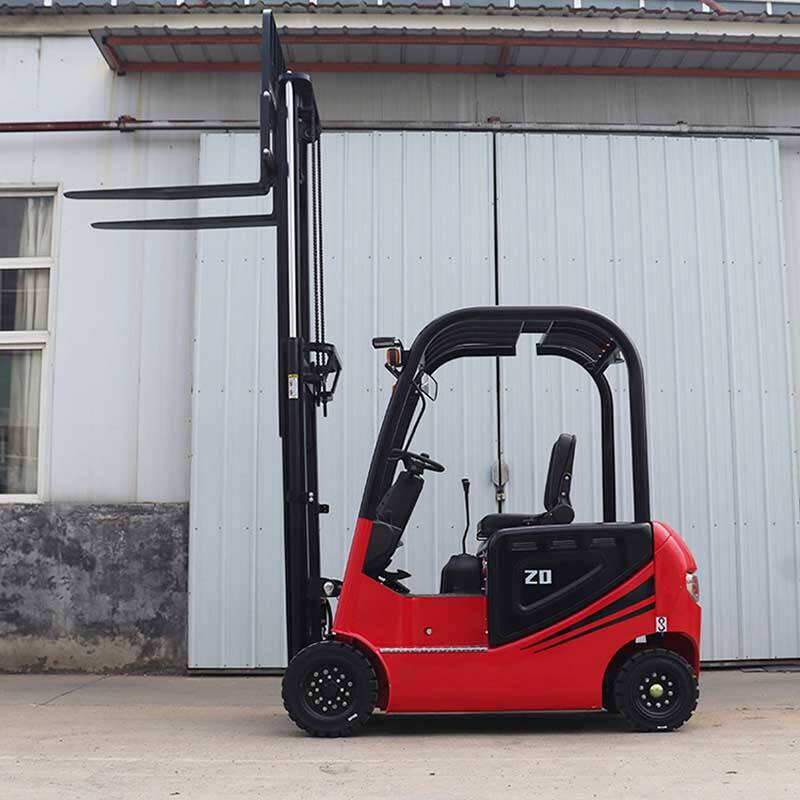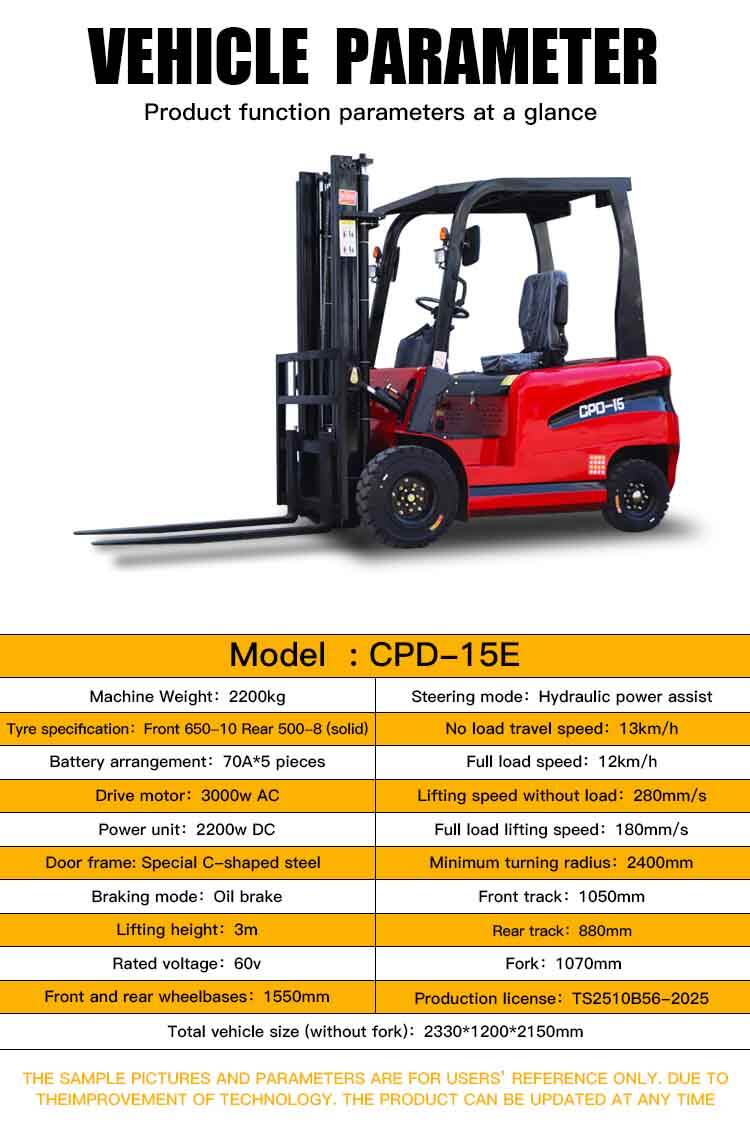電動機器の最適な充電方法 フォークリフト バッテリー
充電頻度とサイクル制限の理解
電気フォークリフトのバッテリー寿命を延ばすために、充電頻度の最適化は非常に重要です。時々、セルバランスのために完全放電(いわゆるディープサイクル)を行うのは問題ありません。これにより、バッテリーパックの寿命が延びます!!!通常はフル充電サイクルを避けてください。適用範囲:EV、HEV、電動工具、UPS、非常用電源、E-bike、E-scooter、E-wheelchairなど。最適化された充電サイクルには、バッテリー寿命を延ばし、特に厳しい運用条件下でもパフォーマンスの劣化を減らすために成功裏に研究され、利用されてきた長い歴史があります。サイクル限界とは、バッテリーが容量を失い始める前の充放電回数のことです。これは重要ですなぜなら、どの業界も電気フォークリフトバッテリーのサイクル限界に関する基準を持っています。一般的には、最高の耐久性を得るためには1,500〜2,500サイクルが推奨されています。サイクル限界に従うことで、企業は投資に対する最大のリターンを得られ、生産性を維持できます。
バッテリーの種類に合った正しい充電器を選ぶこと
あなたの電気機器に適した正しい充電器 フォークリフト バッテリー 選りすぐりの最適な充電器を選ぶことは、怪我やメンテナンス、ダウンタイムを避けるために非常に重要です。これらのスマート充電器は、バッテリーの状態を維持するための洗練されたオプションを備えており、バッテリーに充電できる割合を調整し、過充電を防ぐことができます。標準の充電器は単純に信頼性のある電源供給を提供します。そして、これらのどのタイプの充電器も、最高の互換性和効率のために特定の種類のバッテリーテクノロジーと使用される必要があり、これを怠ると性能が低下したり、損傷につながる可能性があります。ユーザーマニュアルには、通常、ユーザーが選択できる推奨充電器の一覧が記載されており、これによりエネルギーのバランスと利用の最適化、および安全な充電操作がさらに促進されます。適合する充電器とバッテリーの組み合わせで、バッテリーのパワーや寿命を確保しましょう。
山東ヘスネ重工業集団有限公司は、電動フォークリフト業界で注目すべき企業であり、倉庫運用における効率性和耐久性を備えた高品質な製品を提供しています。同社のフォークリフトは、高度な技術を駆使して設計されており、高い安全性と性能基準を満たしており、世界中の企業にとって欠かせない存在となっています。
オポチュニティ充電のリスク
オポチュニティ充電とは、休憩や作業の合間に電気フォークリフトを充電し、バッテリーが可能な限り低くなるまで走行しない方法です。これは便利な解決策ですが、過充電による発熱やバッテリー寿命の低下といったいくつかのリスクが伴います。全体像としては、監視やモニタリングなしに頻繁に行われる『オポチュニティ充電』は、摩耗を大幅に促進し、バッテリーの寿命を最大30%短縮する可能性があります。オポチュニティ充電と通常の充電サイクルの中間的なアプローチが必要です。オポチュニティ充電は運用の柔軟性を高めるかもしれませんが、誤用すると性能の劣化を引き起こすことがあります。これらのトレードオフを考慮することで、企業は計画的な充電行動による不要なバッテリーの劣化を回避できるでしょう。
鉛酸バッテリーの水位の維持
いつそしてどのように蒸留水を補充するか
鉛酸電池を維持するには、定期的な点検と蒸留水の補充が必要です。特に水位が低い状態を監視することは重要で、水不足により危機的な状況が発生する可能性があります。電池の水位は少なくとも週に一度チェックし、頻繁に使用される場合はさらに多くの回数行う必要があります。これらの点検では、電解液が電池の極板を覆っていることを確認し、もし低ければ、蒸留水を補充して給水キャップの少し下まで調整してください。この手順は、電池極板が乾燥による長期的な損傷を防ぐために必要な適切な電解液量を保証します。こぼれを最小限にするために小さなフンネルを使用し、水を追加する前に必ず電池を完全に充電してください(これは時々充電後に実施されます)。また、電池を汚染物質から守り、タップウォーターではなく蒸留水のみを使用してください。不純物は電池寿命を大幅に短縮する可能性があるため注意が必要です。
バッテリープレートにおける低水位の影響
鉛酸電池は決して完全に放電したままにしてはいけません。水不足により電池のプレートが空気にさらされ、硫化という化学反応が起こり、これは電池の容量と出力を永久に低下させます。ある電池メーカーによると、一様な水不足は電池の寿命を半減させる可能性があります。この効率の低下は、電池の化学反応において不可欠な活性成分である硫酸が減少することによって引き起こされ、これが充放電機能を妨げ、エネルギー損失につながります。
その点、電解液が少なくなると作業中の発熱が悪化し、これはバッテリーの極板の形状を変化させ、バッテリーの性能を低下させます。機械的なストレスを避けるためにも、水準が低い場合でも水を適切に補充することで、バッテリーの寿命を何年も延ばすことができます。塩と水のバランスに注意を払うことで、電解液が引き続き良好な電気伝導体として機能し、それが結果的に全体のバッテリーシステムを正常に動作させ、信頼性のある電源としての役割を果たします。
ルーチンクリーニングおよび電池点検プロトコル
腐食を防ぐための月次クリーニング手順
フォークリフトバッテリーの腐食を防ぎ、性能を維持するために、電動フォークリフトバッテリーの定期的な月次清掃が重要です。最初に、ワイヤーブラシと水と重曹のセルツァーを使用し、頻繁に再利用するか、次の泥パック後に使用します。慎重にバッテリーケーブルを取り外し、端子やバッテリーケーブルの先端にある汚れや腐食を除去してください。「この方法により、高い抵抗によるエネルギー損失が最小限に抑えられ、バッテリーの寿命が延びます。清潔な端子はお金を節約でき、いくつかのテストでは、端子が腐食している場合、最大30%のパワー損失が示されています。
ターミナルを清潔に保つことは、エネルギーを少し節約するためだけではなく、電動フォークリフトの健全性のためにも重要です。腐食したコンタクトは効率の悪い電力伝達を引き起こし、電動工具は全く充電できなくなります。これらの清掃習慣を守ることで、フォークリフトが同じレベルのパワーで動作し続けることを保っています(これはスムーズな作業と倉庫でのダウンタイムの減少に直結します)。
摩耗や損傷を確認すべき主要部品
フォークリフトのバッテリーに定期的な点検を行うことは、高価な修理が必要になる前に摩耗や損傷を発見するために非常に重要です。バッテリーターミナル、ケース、接続部品などは、定期的にチェックすべき主要な部分です。腐食、亀裂、または緩い接続などに注意してください。これらはバッテリーの性能に影響を与える可能性があります。「定期的な点検を行うことで、大規模な故障やそれに伴う計画外のダウンタイムを防ぐことができます」と業界の専門家は述べています。
冷却システムのこれらの要素は、月に一度チェックすることをお勧めします。小さな問題がすぐに大きな問題に発展する可能性があるためです。 フォークリフト 修理の専門家は、頻繁に点検を行うことでバッテリーの寿命を延ばし、効率を向上させると述べています。これらの点検を定期的にスケジュールして実施することで、フォークリフトを常に最良の状態で動作させることができ、高額で予期せぬ故障のリスクを最小限に抑え、作業の生産性を向上させます。
深い放電と過熱を避ける
安全な放電閾値の設定
ディープディスチャージについて理解し、電気フォークリフトのバッテリーの健康状態を維持する方法を知ることは重要です。ディープディスチャージとは、バッテリーがその使用目的よりも著しく低いレベルまで放電されることを指し、これはバッテリーの健康に悪いです。業界標準によれば、放電しきい値を設定してバッテリーを保護すべきです。一般的に、ディープディスチャージはバッテリーに硫化を引き起こし、フォークリフトバッテリーの性能と寿命を大幅に低下させます。電気フォークリフトのバッテリー(例:鉛酸またはリチウムバッテリー)が過放電しないようにし、専門的な用途に合わせてバッテリーパックを安全な放電レベルで保つようにしてください。
深い放電がバッテリー寿命に与える影響
頻繁な-heavy dischargesはフォークリフト用バッテリーの寿命を大幅に短縮する可能性があります。バッテリー技術に関する研究により、各-deep dischargeサイクルがバッテリーに害を及ぼし、その寿命を短縮することにつながる可能性があることがわかりました。これは、分子レベルで不可逆的な損傷を引き起こすためです。深放電とバッテリーのサイクル寿命の低下の相関関係から、適切な予防措置が必要とされています。深放電を避けるために、効果的なバッテリーマネジメントシステムと計画的な充電ルーチンの遵守が推奨されます。このようなシステムは通常、安全レベルを超えた放電を自動的に終了させる機能を備えており、バッテリーの寿命を保護し、電動フォークリフトを最高の効率で稼働させることを支援します。


